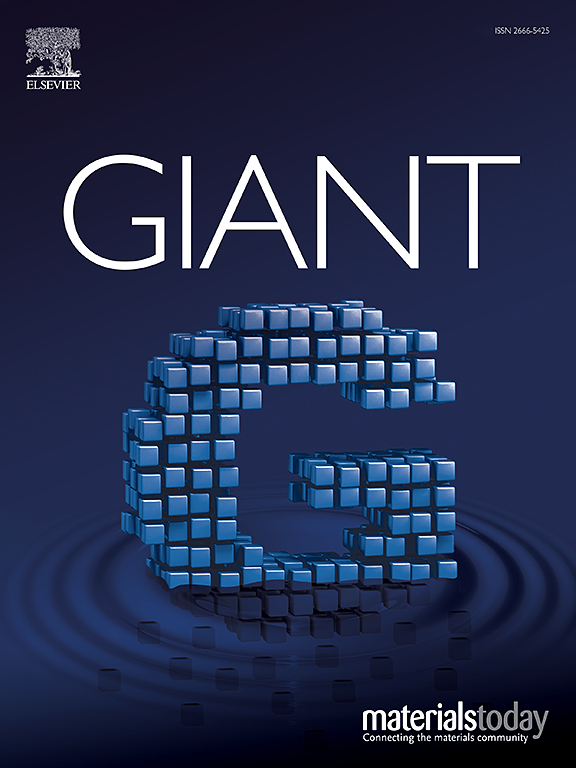Miktoarm star polymers as templates for mesoporous phenolic materials: Enhancing microphase separation and expanding phase diagrams
IF 4.9
1区 化学
Q2 CHEMISTRY, MULTIDISCIPLINARY
引用次数: 0
Abstract
In the field of soft matter, designing different amphiphilic chemical structures could lead to the formation of ordered microphase-separated arrangements. Unlike linear block copolymers, miktoarm star polymers have been extensively utilized and inherently enhance the conformational asymmetry value (ε) in the microphase separation system through their branched chemical structure, allowing control over the interfacial curvature between microphase-separated domains and facilitating the formation of unique self-assembled structures, offering the potential to expand phase diagrams. In this study, we synthesized a common linear PEO-b-PCL diblock copolymer via ring-opening polymerization (ROP) and also prepared an AB3-type block copolymer, PEO-b-PCL3, by linking PEO to a branched PCL3 block through a combination of ROP and click reactions with the similar volume fraction of PEO segment. Resol-type phenolic resin was synthesized by step-growth polymerization and used as the matrix, which was mixed with different weight fractions of linear PEO-b-PCL and miktoarm-type PEO-b-PCL3 block copolymers as templates. FT-IR analysis of these blends at room temperature revealed that, under the similar volume fraction, the miktoarm-type star polymer forms the higher fraction of intermolecular hydrogen bonds with the phenolic resin in the PCL3 block segment, and no crystallization was observed. Variable-temperature SAXS analysis demonstrated that upon thermal cross-linking, the blends exhibited improved stability and enhanced ordered microphase-separated structures. By heating to pyrolysis temperatures to remove the template, the resulting structures were characterized by using TEM and SAXS analyses. The systems constructed by two different templates creating mesoporous materials with different ordered structures such as lamellar, hexagonal columnar, spherical, BCC packing, and even the rare short-range order Frank-Kasper phase. Through phase diagram construction, we found that even with the similar weight fraction, the ordered mesoporous structures formed using the two different type of templates displayed significant differences. Additionally, the results indicated that when the branched segment of the miktoarm-type polymer is located at the core of the micelle, the interfacial curvature decreases. Overall, this study reveals the existence of the unique short-range order Frank-Kasper phase in systems with low χ values using wet-brush blending and validates the feasibility of employing miktoarm-type polymers as templates through analysis of molecular interaction and morphological characterization. This expands the phase diagram in the direction of tuning conformational asymmetry, providing a novel approach for designing innovative or specialized ordered mesoporous materials.
Miktoarm星形聚合物作为介孔酚醛材料的模板:增强微相分离和扩展相图
在软物质领域,设计不同的两亲性化学结构可以形成有序的微相分离排列。与线性嵌段共聚物不同,mitoarm star聚合物已被广泛应用,并通过其分支化学结构内在地增强了微相分离系统中的构象不对称值(ε),允许控制微相分离域之间的界面曲率,促进独特自组装结构的形成,为扩展相图提供了潜力。在本研究中,我们通过开环聚合(ROP)合成了一种常见的线性PEO-b- pcl双嵌段共聚物,并在PEO段体积分数相似的情况下,通过ROP和click反应将PEO与支链PCL3嵌段连接,制备了ab3型嵌段共聚物PEO-b-PCL3。以不同质量分数的线状PEO-b-PCL和密臂型PEO-b-PCL3嵌段共聚物为模板,采用步长聚合法制备了分辨率型酚醛树脂。室温下对共混物的FT-IR分析表明,在体积分数相近的情况下,mitotoarm型星形聚合物与PCL3嵌段酚醛树脂形成的分子间氢键比例较高,未发生结晶。变温SAXS分析表明,经热交联后,共混物表现出更好的稳定性和增强的有序微相分离结构。通过加热至热解温度去除模板,得到的结构通过TEM和SAXS分析进行了表征。由两种不同的模板构建的体系产生了具有不同有序结构的介孔材料,如片层状、六边形柱状、球形、BCC填充,甚至是罕见的短程有序的Frank-Kasper相。通过相图构建,我们发现,即使在质量分数相似的情况下,使用两种不同类型的模板形成的有序介孔结构也存在显著差异。此外,研究结果表明,当密臂型聚合物的支链段位于胶束核心时,界面曲率减小。总体而言,本研究揭示了湿刷共混低χ值体系中存在独特的近程阶Frank-Kasper相,并通过分子相互作用和形态表征分析验证了采用miktoarm型聚合物作为模板的可行性。这将相图扩展到调整构象不对称的方向,为设计创新或专门的有序介孔材料提供了一种新的方法。
本文章由计算机程序翻译,如有差异,请以英文原文为准。
求助全文
约1分钟内获得全文
求助全文
来源期刊

GIANT
Multiple-
CiteScore
8.50
自引率
8.60%
发文量
46
审稿时长
42 days
期刊介绍:
Giant is an interdisciplinary title focusing on fundamental and applied macromolecular science spanning all chemistry, physics, biology, and materials aspects of the field in the broadest sense. Key areas covered include macromolecular chemistry, supramolecular assembly, multiscale and multifunctional materials, organic-inorganic hybrid materials, biophysics, biomimetics and surface science. Core topics range from developments in synthesis, characterisation and assembly towards creating uniformly sized precision macromolecules with tailored properties, to the design and assembly of nanostructured materials in multiple dimensions, and further to the study of smart or living designer materials with tuneable multiscale properties.
 求助内容:
求助内容: 应助结果提醒方式:
应助结果提醒方式:


